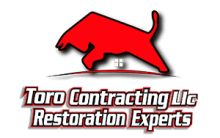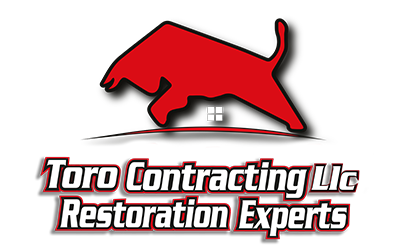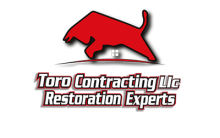To identify roof storm damage, look for missing shingles, granule loss, dented metal, or circular indentations from hail. Check your attic for light penetration or moisture buildup, and inspect ceilings for water stains. Wind damage often appears as lifted edges or loosened fasteners, while heavy rain exploits existing vulnerabilities. After severe weather, examine flashing around chimneys and vents for separation. Proper documentation with high-resolution photos will strengthen your insurance claim process.
Key Takeaways
- Look for missing, cracked, or curled shingles, especially after high winds exceeding 50 mph.
- Check for circular indentations and granule loss on shingles, indicating hail impact damage.
- Inspect for water stains on ceilings and moisture in attic insulation after heavy rainfall.
- Examine roof flashing around chimneys and vents for lifting or separation.
- Document all damage with high-resolution photos from multiple angles for insurance claims.
Common Types of Storms That Damage Roofs
When homeowners assess potential roof damage, they must first understand which weather events pose the greatest threats. Hailstorms deliver concentrated impact, creating dimpled shingles and compromising granule integrity. High winds exceeding 50 mph can lift, crack, or completely remove roofing materials, particularly at edges and corners.
Thunderstorm impact extends beyond lightning strikes, which can splinter wooden components and trigger fires. The accompanying heavy rainfall often exploits existing vulnerabilities, penetrating compromised areas and causing structural degradation. Tornado effects are particularly devastating, as their rotational forces create pressure differentials that can literally tear roofs from structures.
Winter weather presents unique challenges through freeze-thaw cycles, ice dam formation, and accumulated snow weight. Hurricane and tropical storm systems combine multiple damaging elements—sustained winds, flying debris, and prolonged moisture exposure.
Signs of Wind Damage on Different Roofing Materials
Wind damage manifests differently across roofing materials, with missing shingles or tiles being the most obvious indicator requiring immediate attention. You’ll notice lifted flashing around chimneys, vents, and edges where the metal has pulled away from the roof surface during high winds. Asphalt shingles may display granule loss and curling edges, while clay tiles often crack or break, and metal roofing can exhibit loosened fasteners or separated seams.
Missing Shingles or Tiles
After severe storms pass through your area, missing shingles or tiles represent one of the most visible and conclusive indicators of wind damage to your roof. High winds can lift these protective elements, breaking the seal that binds them to the underlying structure and carrying them away entirely.
Examine your property’s perimeter for displaced roofing materials, which often land in yards or gutters. Even partially detached shingles or tiles require immediate attention, as they create vulnerability points where water can penetrate. When inspecting clay or concrete tiles, look for cracks at attachment points that might not be visible from ground level.
Prompt shingle replacement or tile repair is essential to prevent secondary damage like water infiltration, mold growth, and structural deterioration. Document all missing or damaged areas with photographs before repairs begin for insurance documentation.
Lifted Flashing Areas
While missing roofing materials provide obvious evidence of storm damage, the metal flashing components of your roof system often tell an equally significant story. During high winds, poorly secured flashing can lift, bend, or detach completely, creating vulnerable entry points for water.
| Flashing Location | Storm Damage Indicators |
|---|---|
| Chimney | Separation at seams, warping |
| Valleys | Lifted edges, bent metal |
| Eaves | Peeled-back sections, missing fasteners |
| Skylights | Broken seals, displaced metal |
| Vent pipes | Loosened collars, torn rubber boots |
Inspect these critical junctures carefully after severe weather. Professional flashing repairs should address not only visible damage but also improve storm prevention through proper fastening techniques and high-quality sealants. Keep in mind that compromised flashing often reveals itself through interior water stains before catastrophic leaks develop.
Material-Specific Damage Patterns
Different roofing materials exhibit distinctive damage signatures when subjected to high-velocity winds and storm conditions. Asphalt shingles typically show curling, cracking, or complete removal, with granule loss being a key indicator of impact trauma. Clay or concrete tiles may crack or shift laterally, creating vulnerable water entry points.
Metal roofing often develops dents from hailstones, while panel separation occurs at fastening points during intense wind uplift. Wood shakes split along the grain or develop rot spots where moisture penetrates storm-compromised surfaces.
Your inspection techniques should adapt to each material’s vulnerability profile. Assess material durability by examining edge integrity and attachment points—these fail first in storm events. Document patterns that distinguish natural weathering from acute storm damage, as this differentiation proves critical for insurance claims.
Identifying Hail Impact and Its Consequences
Hail damage presents distinctive markers on roofing materials that require methodical inspection to identify correctly. When examining your roof after a hailstorm, look for circular indentations with consistent impact patterns across the surface. The severity of damage correlates directly with hail size—smaller hailstones (under 1 inch) may cause superficial marking, while larger ones can fracture materials.
On asphalt shingles, you’ll notice granule loss at impact sites, creating exposed substrate vulnerable to UV degradation. Metal roofing displays denting that may compromise protective coatings. Inspect ridge caps thoroughly, as their raised position makes them particularly susceptible to hail strikes. Keep in mind that some damage isn’t immediately visible—hairline cracks from impacts often expand over time, allowing moisture infiltration that leads to underlying structural deterioration.
Water and Rain Damage: What to Look For
Unlike impact-oriented hail damage, water infiltration from heavy rainfall creates a distinct set of warning signs that you’ll need to recognize promptly. Water intrusion often manifests inside your home before becoming externally visible, making regular interior inspections essential.
- Ceiling water stains – Yellowish-brown discolorations on ceilings or walls indicate water has penetrated your roofing system and is collecting in your attic space.
- Visible moisture buildup – Dampness in attic insulation, structural beams, or around chimney penetrations signals compromised waterproofing elements.
- Deteriorating fascia boards – Swollen, cracked, or discolored wood trim around roof edges suggests prolonged water exposure has overwhelmed drainage systems.
After heavy storms, examine your attic with a flashlight during daylight hours to spot light penetration through compromised roof decking—a definitive indicator of roof failure requiring immediate professional assessment.
When to Call a Professional Roof Inspector
Although homeowners can identify certain signs of storm damage, knowing when to bring in professional expertise remains critical for comprehensive roof assessment. You should contact a certified inspector immediately after severe weather events involving hail, high winds exceeding 50 mph, or tornado activity in your vicinity. Don’t delay if you notice multiple missing shingles, granule loss exceeding 30%, or interior water stains appearing suddenly after a storm.
Professional roof inspection becomes necessary when accessing steep or multi-story roofs poses safety risks. Additionally, insurance claims typically require documentation from qualified professionals. Establish storm readiness by scheduling bi-annual inspections—ideally in spring and fall—to identify vulnerabilities before extreme weather hits. Keep in mind that certified inspectors possess specialized equipment to detect hidden structural damage and moisture intrusion that visual assessments might miss.

Documenting Damage for Insurance Claims
Thorough documentation of roof damage strengthens your insurance claim and expedites the reimbursement process. You’ll need to capture comprehensive photo evidence from multiple angles, maintain a detailed inventory of all affected components with estimated replacement costs, and secure written assessments from certified inspectors. Professional documentation validates your claim’s legitimacy while providing technical specifications that satisfy insurance adjusters’ requirements for proper compensation.
Photo Evidence Best Practices
When documenting roof storm damage, proper photographic evidence can significantly strengthen your insurance claim. Clear, comprehensive photos provide insurance adjusters with visual verification of your damage assessment and help expedite your claim.
- Optimize photo quality by using the highest resolution setting on your camera or smartphone. Capture images from multiple angles, ensuring each damaged area is clearly visible and identifiable.
- Consider lighting conditions carefully—shoot during daylight hours but avoid direct sunlight that creates harsh shadows. Overcast days often provide ideal diffused lighting for documenting damage.
- Include context in your photos by taking wide shots that show the damage location on your roof, then progressively closer shots that detail specific damage. Always incorporate reference objects for scale when photographing smaller damage areas.
Detailed Inventory Records
Beyond photographic evidence, creating a comprehensive inventory record forms the backbone of any successful storm damage insurance claim. You’ll need to establish a detailed tracking system that documents each damaged area of your roof with precise measurements and descriptions. Organize your findings into a spreadsheet or specialized app that timestamps each entry.
Implement damage categorization by classifying issues as structural, cosmetic, or functional. For each damaged component, record the material type, approximate age, and estimated replacement cost. Don’t overlook secondary damage such as water intrusion or insulation compromise. Include documentation of any temporary repairs you’ve made to mitigate further damage, as these expenses are often reimbursable. Your inventory should reference corresponding photo evidence by filename or number for easy cross-referencing during the claims process.
Professional Assessment Documentation
A qualified roofing professional‘s inspection forms the cornerstone of any storm damage insurance claim. Their documentation provides objective evidence of damage extent, causation, and repair requirements that insurance adjusters rely on for claim evaluation.
When obtaining professional assessment documentation, verify it includes:
- Comprehensive roof inspection reports with dated photographs documenting all damaged areas from multiple angles
- Detailed damage assessment measurements including dimensions of affected sections and specific material degradation
- Professional cost estimates that break down required repairs by labor, materials, and anticipated completion timeframes
Request digital copies of all documentation and maintain these records securely. Your roofing contractor should provide inspection certificates with their license information and professional credentials attached, strengthening your claim’s credibility with the insurance provider.
Preventative Measures to Minimize Future Storm Damage
Although storms remain unpredictable forces of nature, implementing strategic preventative measures can significantly reduce your roof’s vulnerability to damage. Regular preventative maintenance should include trimming overhanging branches that could impact your roof during high winds. Install impact-resistant shingles rated for your region’s typical weather patterns, as these materials offer superior protection against hail and debris.
Secure loose roofing materials and guarantee proper fastening of all components according to manufacturer specifications. Consider reinforcing your roof deck with hurricane straps or clips in high-wind regions. Proper attic ventilation and insulation prevent moisture buildup that weakens structural integrity over time.
Storm preparedness also involves cleaning gutters seasonally to prevent water backup and establishing a relationship with a reliable roofing contractor for quick post-storm response when damage does occur.
Frequently Asked Questions
How Long Does a Storm Damage Inspection Typically Take?
Did you know that over 90% of homeowners don’t recognize when their roof needs inspection after a storm? Your storm damage assessment typically takes 30-45 minutes for a standard residential property. This timeframe includes the inspector’s thorough examination of all roof planes, flashing, gutters, and attic space. Inspection timing may extend to 60+ minutes for larger homes or when significant damage is present. You’ll receive a detailed report documenting all findings immediately after completion.
Can I Inspect My Roof Safely Without Professional Equipment?
Inspecting your roof without professional equipment isn’t recommended. Your safety should be paramount. If you must proceed, use binoculars for ground-level inspection, maintain three points of contact on ladders, wear non-slip footwear, and never inspect during inclement weather. Roof safety requires proper fall protection systems that professionals utilize. Consider inspection tips like examining gutters for granules and checking attic ceilings for water stains as safer alternatives to walking on your roof surface.
Will My Insurance Rates Increase After Filing a Storm Damage Claim?
Filing a storm damage claim won’t automatically increase your insurance premiums. Your claim history matters, but most insurers classify storm damage as an “Act of God” outside your control. However, variables like your geographic location, previous claims, and insurance company policies influence potential rate adjustments. Multiple claims within a short timeframe may trigger increases upon renewal. Review your policy’s specific terms regarding weather-related claims to understand how your particular insurer handles these situations regarding rate recalculations.
How Quickly Should Roof Repairs Be Completed After Storm Damage?
After storm damage, emergency repairs should be completed within 24-48 hours to prevent further water infiltration and structural compromise. Complete roof repairs typically follow a timeline of 1-2 weeks, depending on contractor availability and material procurement. You’ll need to prioritize temporary solutions like tarping while awaiting full restoration. Insurance documentation requirements may affect your repair timeline, so communicate promptly with your insurer. Weather conditions and the scope of damage will ultimately determine your specific repair schedule.
Can Minor Storm Damage Worsen if Left Unrepaired?
Yes, minor storm damage can absolutely worsen if left unrepaired. Like a small crack in a windshield that gradually spreads, seemingly insignificant roof issues can expand dramatically over time. You’ll face long-term effects including water infiltration, structural weakening, mold growth, and insulation degradation. What begins as displaced shingles or minor flashing damage will inevitably compromise your roof’s integrity when exposed to subsequent weather events. Prompt repairs of minor damage are essential to prevent costly comprehensive replacements later.






